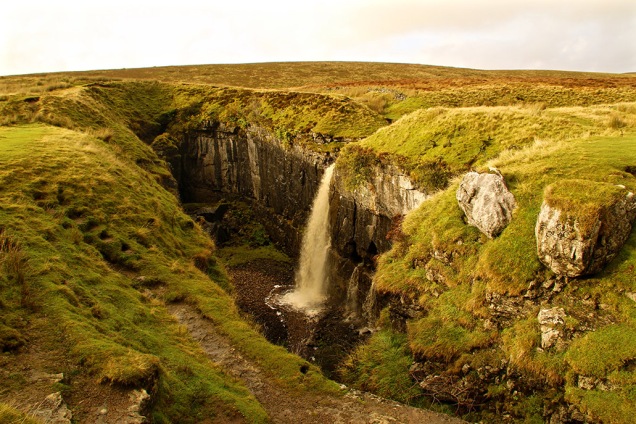I spent a great deal of my working life looking at photographs, deciding which should appear in the publications I worked on. Often the decision was down to the story told by the photo rather than its artistic or technical merits. When all those points were satisfied in one shot the chances were I wouldn’t be able to afford to pay for it. Now I’m retired but I still enjoy looking at photos. The internet provides a wealth of photographic material for me to view (get your minds out of the gutter, please!) but I also love visiting photo exhibitions where the art of printing and presenting also comes into play. On a very wet Wednesday I went to Wensleydale to see a photo exhibition by Selside photographer Hilary Fenten at the Dales Countryside Museum in Hawes. She captures the essence of the Dales extremely well and obviously has a natural talent. Seeing such work helps inspire me with my own photography. The top picture showing Horton Scar Lane tells the story of Thursday – see later on in the blog.

The rain was pouring down in Hawes, as can be seen in this shot of the beck through the town centre.
And back home in Ribblesdale, this shot was taken with a shutter speed of 0.3000s which tells you how quickly the Ribble was traveling over Langcliffe Weir.
While the river was raging like a good un just a few yards away, Langcliffe Mill pond looked serene. Stainforth Scar in the distance had a cloud for a hat almost all day…

Many folk had a fine sunset on Wednesday but a combination of low cloud and fog here created a strange light and the chance to take a direct photo of the sun.

The previous day had seen clear blue skies as I strolled into Settle from Langcliffe via the high path. Grazing on the steep hills is donkey work, but the animal is perfectly developed for such land with its long back legs and neck.

I always think Castleberg rock provides a dramatic welcome to the town centre…

The forecasters predicted the rain would cease on Thursday afternoon so I planned a stroll up Horton Scar Lane from Horton village to see the water pouring into Hull Pot. The main waterfall was a great sight and there were smaller falls seeping out through the sides, making it look like a leaking dam about to burst. However, there wasn’t much of a collection of water in the bottom of this great hole so there must have been plenty of room underground to take it away down the hillside to eventually join the Ribble. I’ve witnessed water up to about halfway up the hole while other people tell me they’ve seen it full. It’s an awesome place and deadly if you are unaware of its presence on a misty day. At 300ft long, 60ft wide and 60ft deep, Hull Pot is thought to be the largest (natural) hole in England – although personally I think that title belongs to London.

I watched the cloud clear to reveal Penyghent but I wasn’t tempted to head up to the top – my excuse being it may well have started to get dark on the way back (honest).

The small wood near Ribblebanks at Langcliffe always puts on its coat of many colours around this time of year and is best seen from the opposite hillside above the railway line. The view over the stoneworks isn’t so pleasant but then this part of Ribblesdale, with all its natural resources, has always been home to industry with quarries, limeworks and mills providing employment for centuries.
Hallowe’en passed by quietly apart from when I was preparing for bed. I looked in the bathroom mirror and saw a grotesque grey-haired old man looking back at me. Where did my youthful looks go?















